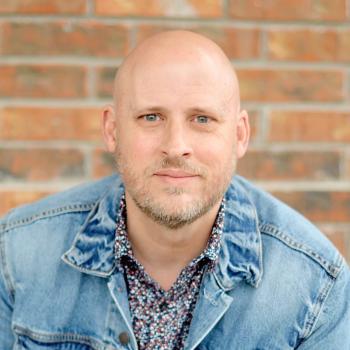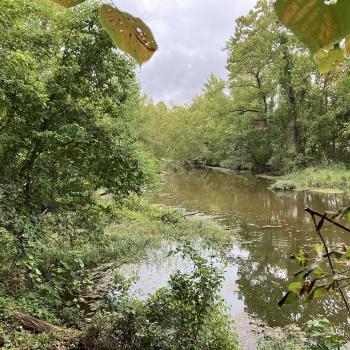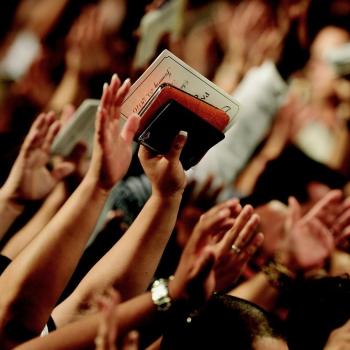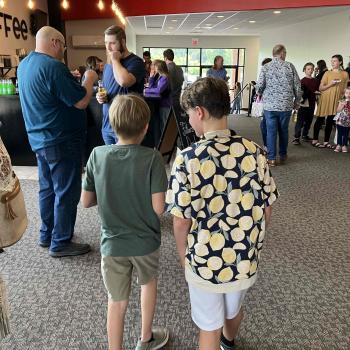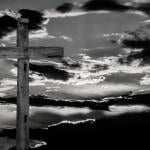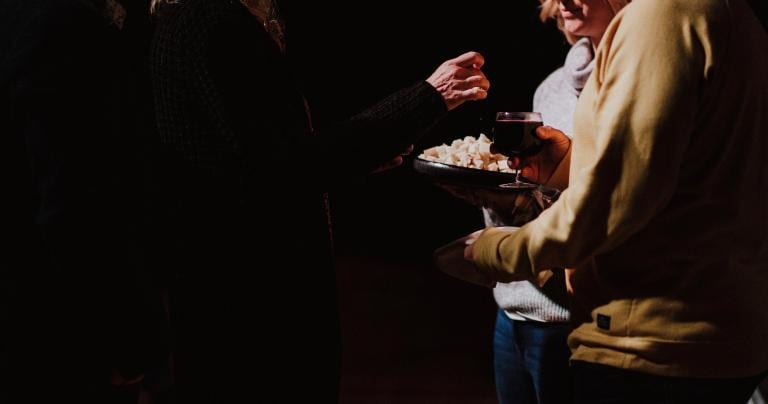
Communion, pt. 5 | Early Influences, Justin Martyr
For more on Communion in the Early Church from the Archives CLICK
Justin Martyr, The First Apology
Justin enters Rome around A.D. 135, gains a following of students, and addresses the emperor about the Christian faith in The First Apology.[1] Justin writes of the offertory:
“Then bread is ‘offered’ (prospheretai, perhaps better translated here ‘presented’) to the president and a cup of water mingled with wine . . . the sacrifices which are offered (prospheromenon) to God by us gentiles, that is the bread of the eucharist and cup likewise of the eucharist.”[2]
There seems to be a real offering or sacrifice in the rite. As is customary, the people are the ones providing the elements.
“In giving these things, the people gave of themselves to God: even as God, by the same signs, would presently give of Himself to them in holy communion.”[3]
Justin states that after the offertory, the president prays, “according to his ability,” or extemporaneously.[4] Justin writes:
“And he takes them and offers up praise and glory to the Father of all things, through the name of his Son and of the Holy Ghost, and gives thanks at length that we are deemed worthy of these things at his hand.”[5]
the elements transformed?
What happens to the elements according to Justin is a matter of dialogue for scholars, and may be beyond the scope of this article. First there are those who think Justin speaks of the elements as the body and blood. Henry Bettenson and Chris Maunder translate Justin as writing:
“the food blessed by the prayer of the word which we received from him, by which through its transformation, our blood and flesh is nourished, this food is the flesh and blood of Jesus who was made flesh.”[6]
Bettenson and Maunder leave the door open for the transformation of the elements. Irvin and Sunquist state, “Justin regarded the bread and wine as the flesh and blood of Jesus.”[7]
our bodies transformed?
Contrarily, Dix says Sarapion later develops the idea of the body and blood.[8] Bard Thompson translates Justin:
“the food, ‘eucharized’ by the formula of prayer which comes from Him, and from which our flesh and blood are nourished by transformation, is the flesh and blood of that incarnate Jesus.”[9]
Thompson translates Justin Martyr and opens the door for the transformation of our bodies.
Robert Webber offers a slightly more modern translation:
“the food which is blessed by the prayer of His word, and from which our blood and flesh by transformation are nourished, is the flesh and blood of that Jesus who was made flesh.”[10]
Webber stops short of declaring that the elements become the actual body and blood. He refers to them as, “special agents of divine action.”[11] He believes we should be take them in faith for salvation and healing.[11]
anamnesis and memnetai
In Justin we find the roots of both recalling and thanksgiving. Thompson says: “It was an anamnesis, a re-calling of Christ’s passion, indeed of the whole incarnation.”[12]
“He [Justin] speaks of the eucharist as the ‘pure sacrifice’ of christians, ‘as well for the ‘re-calling (before God, anamnesis) . . . the memorial (memnetai) of the passion.”[13]
Webber summarizes Justin’s influence.
“Justin’s description of the bread and wine as the body and blood of the Lord was neither the later Catholic doctrine of transubstantiation nor the Protestant concept of memorialism . . . Justin’s understanding may be described as ‘real presence.’ That is, there is a mystery at work here, whereby Jesus becomes savingly present.”[14]
Like others, Dom Gregory Dix attests to Justin Martyr’s influence on both East and West as “an older witness.”[15]
For more on Communion in the Early Church from the Archives CLICK
pic credit: Priscilla Du Preez | A person takes communion at a Christian church service | 11.15.18 | unsplash
notes:
- Dale T. Irvin and Scott W. Sunquist, History of the World Christian Movement, Volume I: Earliest Christianity to 1453 (Maryknoll, NY: Orbis Books, 2009), 78.
- Dom Gregory Dix, The Shape of the Liturgy, 3rd ed. (London: Bloomsbury T&T Clark, 2015), 111.
- Bard Thompson, ed., Liturgies of the Western Church (Philadelphia, PA: Fortress Press, 1980), 5.
- Ibid.
- Henry Bettenson and Chris Maunder, eds., Documents of the Christian Church, 4th ed. (New York: Oxford University Press, 2011), 70.
- Ibid., 71.
- Irvin and Sunquist, 78.
- Dix, 167-168.
- Thompson, 8.
- Robert E. Webber, Ancient-Future Faith: Rethinking Evangelicalism for a Postmodern World (Grand Rapids, MI: Baker Books, 2004), 111.
- Ibid.
- Thompson, 7.
- Dix, 116.
- Robert E. Webber, Worship Old and New: A Biblical, Historical, and Practical Introduction, Rev. ed. (Grand Rapids, MI: Zondervan, 1994), 239.
- Dix, 116.



